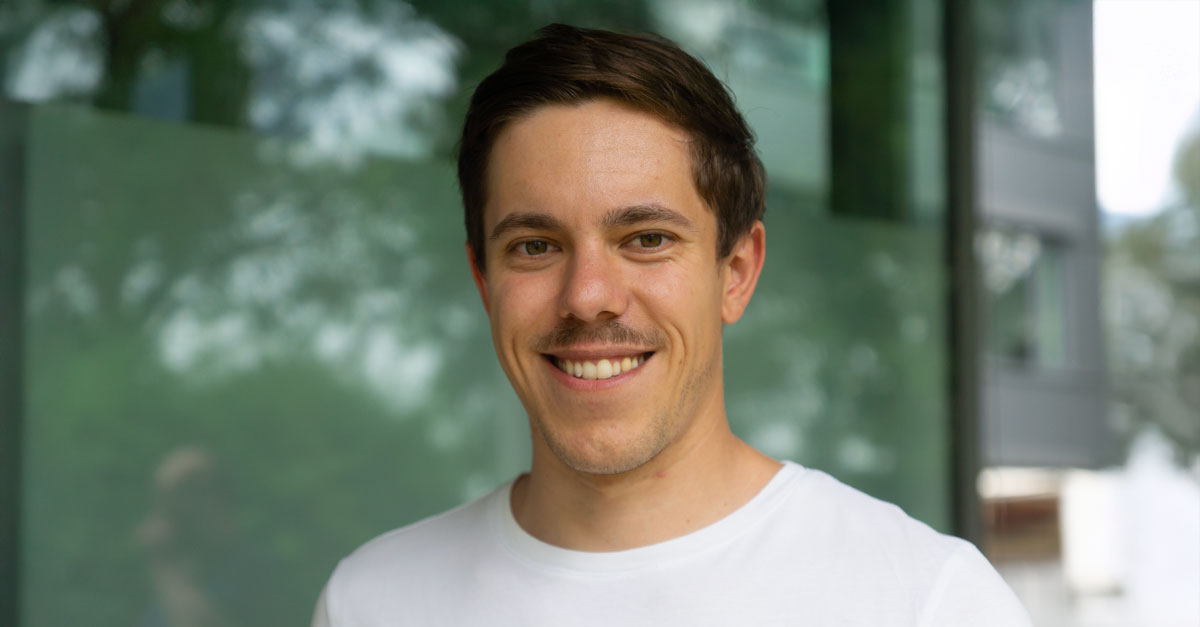Focus on innovation: an interview with board member Dr. Stefan Brandner

Innovation is one of our five leadership values. In an interview with SupplyOn board member Dr. Stefan Brandner, find out how we define innovation, the role it plays in our long-term strategy, and how we ensure that all employees across hierarchies and in all areas can participate in it. Learn about internal best practices and how we deal with challenges such as lack of time and failure to constantly question the status quo and proactively seek opportunities to improve our service offerings.
How does SupplyOn define innovation?
Stefan: We are guided by common definitions. We differentiate between innovations where the degree of technological novelty is very high. This includes, for example, innovations that are disruptive to existing markets and can completely change the market. The smartphone, the software-as-a-service concept, and platform business models are typical examples of this.
On the other hand, there are innovations that use existing technologies to continuously increase customer value. These innovations are divided into incremental innovations, which are minor optimizations of existing products, and sustainable innovations, which are significant enhancements to a product to secure the company’s market position in the long term. Applied to the examples mentioned, this means that providers in these originally disruptive markets must continuously improve. Customers do not opt for the provider that was first to define a new market with a disruptive product, but for the one they expect to offer the greatest benefit in the future.
What role does innovation play in our long-term strategy?
Stefan: Our customers are facing ever-increasing challenges. Disruptions in the supply chain are now the order of the day. Cost pressure is constantly increasing due to high development costs, e.g., in electromobility. Short development cycles increase the risk of quality problems. And for some years now, compliance with environmental and social standards and the industry’s decarbonization targets have added to these challenges. As a solution provider, we must therefore always have our finger on the pulse.
We were already focusing on the disruptive platform business model when we were founded in 2000, and its relevance is greater today than ever before. Our main focus is therefore the continuous optimization of existing solutions and services, including the new possibilities of artificial intelligence, as well as the regular development of new solutions as part of our still innovative business model. However, we must not ignore disruptive innovations either. We must closely monitor and evaluate technological developments and also test them ourselves. This is the only way we can develop a sound strategy that is sustainable in the medium and long term.

To what extent is innovation seen as a shared responsibility of all employees, and how is this responsibility encouraged and supported?
Stefan:It is very important to us that as many employees as possible are in direct contact with customers at all levels. Their diverse perspectives and experiences serve as a basis for recognizing needs and trends at an early stage and developing innovative solutions. This customer-oriented approach forms the foundation of our shared responsibility for innovation in our products and services.
In line with our understanding of leadership “LOVE TO LEAD“, which also includes the value of self-development, we actively encourage our employees to continuously expand and improve their skills.
As part of this, we are currently intensively promoting personal development in the field of artificial intelligence, for example. Internal company hackathons and participation in conferences are also essential to give as many employees as possible the environment and time to broaden their perspectives.
We see innovation as independent of the hierarchy and expect appropriate innovations to be identified and driven forward at every level. We place a strong emphasis on taking ownership at work and welcome every employee who takes the initiative and makes bold suggestions.
Managers play a crucial role here as role models and are responsible for living and promoting our understanding of how to deal with innovation.
How do we deal with failure and mistakes, which are often part of the innovation process, and how do we use these experiences to develop and improve?
Stefan: By using the Scaled Agile Framework (SAFe) in our product development, we are able to manage innovations in a structured way. Personally, the process is very important to me. The better we understand the customer’s problem and the more closely we coordinate the solution concept with the customer, the higher the probability of success when implementing innovations.
Nevertheless, innovations can encounter unexpected hurdles that lead us to pause or even completely stop certain projects. However, we do not see this as a failure, but rather as a structured process to capitalize on potential opportunities while also limiting bad investments early on.
There are also issues where we have to shorten the process for time-to-market reasons. It is then important that we regularly evaluate our progress and quickly adapt our approach based on new findings. This makes regular reviews all the more important to continuously learn and improve. We know that we will also make mistakes with this much more agile approach. We consciously accept this. As we are competing against start-ups on some topics, we have decided to work like a start-up on selected topics. The advantage, however, is that our start-up division has access to a complete operations and support organization as well as a business network with over 140,000 companies in 70 countries.
What specific examples of best practice do you know of, or do you have any further tips for our readers on the topic of innovation?
Stefan: We have many examples: With our SRM suite, we are probably the only provider that maps purchasing and quality processes so broadly and integrates them so deeply at the same time. The same applies to the integration of supply chain and transport management processes, for which we won the VDA Logistics Award together with Bosch and Eurolog. I was also very impressed by the digital product twin, which was initially developed for the traceability of quality problems and is now the technological basis for many other applications.
However, consistent digitalization also requires a comprehensive range of services in addition to SupplyOn solutions. That’s why we need to start innovating here too. A best-practice example comes from the onboarding team with the supplier community model. Here we regularly broadcast information events on current supply chain topics from SupplyOn’s own studio. These can be expert talks on sustainability, for example, or discussions with customer representatives who present their digitization strategy. The idea of the supplier community model was developed independently by the team and implemented perfectly. Of course, there were also critical voices when the investment decision was made, but the team consistently fought for their idea and we are now looking forward to around 1,000 participants per event.
The most recent example of best practice I would like to mention is the development of our comprehensive ESG suite. Here we have adapted to the specific market conditions with a new lean organization. The team has been given a great deal of responsibility, but also the corresponding decision-making authority. It has accepted this challenge in an exemplary manner and is breaking new ground not only in product development, but also in other processes, such as go-to-market or user support. Innovation also means that we have to question our organization and our processes and, where necessary, take fundamentally different paths.
I recommend that external readers and potential applicants get to know our corporate culture and working methods better by actively engaging with our current projects and success stories.
If you would like to be part of an innovative team and contribute your skills in a dynamic environment, we invite you to apply to us as an employer and shape the future of the supply chain together: to our job offers



